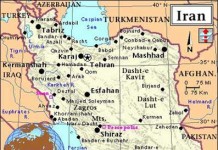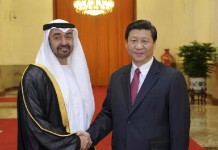Context
If there was any doubt that US and Afghanistan would not be able to reach a strategic deal, that notion was dispelled this week. President Obama arrived in Kabul on Tuesday for a nighttime mission to sign a strategic pact with his Afghan counterpart, President Karzai. The agreement defines the American role in Afghanistan beyond 2014, when its forces are expected to withdraw.
What’s astounding is how little is known about the composition of the agreement. For the most part, the critical aspects such as the level of economic assistance and the strength of troops will be defined later. In other words, the deal is vague in details, and it is hard to ascertain what facts and assumptions became the basis for it. This is not obviously accidental; most of this is to cover US strategic intent and posture.
Analysis
Ground Situation And New Emphasis
 If one starts to follow the headlines and what is known about the ground reality, it presents a bleak picture for the coalition forces and the present Afghan government. Taliban have recently been able to carry out such brazen attacks in Kabul that even an optimist would be forced to convert. After a decade of warfare, things are not getting any better even in the capital.
If one starts to follow the headlines and what is known about the ground reality, it presents a bleak picture for the coalition forces and the present Afghan government. Taliban have recently been able to carry out such brazen attacks in Kabul that even an optimist would be forced to convert. After a decade of warfare, things are not getting any better even in the capital.
So where does this leave any rational western policymaker? There is a realization that they cannot kill their way to victory. If it were so, Vietnam would not have turned out the way it did. This does not mean that deadly force does not work; the case of Japan presents a different example. However, in the present environment, both these options are not viable. If it were not due to economic compulsions and lessons of history, NATO would have probably carried on indefinitely in Afghanistan.
These stark realities have forced the mission more towards smart technologies (drones) and the use of Special Forces. Yes, it is important to eliminate the enemy foot soldiers, but more significant, in the new premise, is to go after and neutralize the head honchos, wherever they reside. As it appears now, the political reconciliation will only come after. No wonder the negotiations with the Taliban are in such disarray.
The Mission
Things get quite murky when we talk of the mission. What was the US objective in Afghanistan and what would signify its accomplishment? US came to Afghanistan after 9/11 to eliminate Al-Qaeda and prevent Afghanistan from ever becoming a safe haven for extremists. However, overtime, not only Afghanistan and FATA have persisted as the safe havens, but many new ones are emerging in northern Africa and Middle East. Thus, the scope of the mission and its reach is increasing by the day while the economic resources needed to back such a tremendous undertaking are dwindling.
According to the strategy that came out of Obama’s review of Afghan policy, any group that parts with Al-Qaeda will be included in the reconciliation process. In reality, Quetta Shura and Haqqani network have remained on the US hit list while Kashmiri jihadists, such Lashkar-e-Tayyiba (LeT), have also made it on the list. There is no evidence to suggest the crosspollination between these groups has decreased.
PoliTact had noted in earlier assessment that extending the mission beyond Al-Qaeda to other affiliate groups is going to complicate the mission. This goal is certainly not achievable by the 2014 deadline. Furthermore, this approach is reinforcing the perception that US presence in the region has less to do with Afghanistan and is more about Iran and Pakistan. During a talk at the Woodrow Wilson Center back in November, a former White House senior aide Vali Nasr had predicted that the future US presence in the region is going to be more about Pakistan and Iran.
The evolution has also raised questions in the American policy circles that Afghanistan should not be consuming a major chunk of resources, especially as the war against terror is now not limited to any one country. Furthermore, the focus of the fight against extremists and non-state actors should not distract US and NATO from preparing against the emerging state actors in the Asia Pacific. Ultimately, both these influences are impacting global power politics. Middle East, where many of the new safe haves are popping up, is a major energy source for the established and the emerging powers. The political wrangling over Iran’s nuclear ambition, and how the US sanctions on its oil exports are playing out, provide an interesting case study.
Russia And China
Soon after the agreement was signed, US emphasized that it does not want long-term military bases in Afghanistan. These clarifications were directed more at Pakistan and Iran. The motives of China and Russia are more complex.
On the one hand, China and Russia will like to see US remain entangled in Afghanistan and thus avoid its full concentration. On the other hand, both countries are concerned about loosing their allies. At some level, both nations also sympathies with the US; China has problems with Muslim extremists in Xinjiang province while Russia continues to have disturbances in Dagestan and Chechnya. US and Russia have also carried out join operations again drug traffickers in Afghanistan. The US-Afghan strategic agreement needs to be understood in this global context.
Nonetheless, a primarily military approach to the Afghan conflict has not worked up to this point and there is minimal chance it will in the future. While the status quo cannot prevail, change brought upon by force is not likely to last either. The best way to bring about transformation is to convince those impacted by it, on how they will benefit from the change.
The Future
In this respect, quick results on the Afghanistan-Pakistan-India economic and trade cooperation, also known as the New Silk Road initiative, provides the best hope. For it to work though, Iran would also have to be on board. Additionally, the reasons behind the trust deficit amongst different players will have to be genuinely addressed. In a recent meeting of the Afghan-India Council in New Delhi, it was decided that India would soon host an investment meeting on Afghanistan. Thirteen countries are to be invited to this forum, including Iran, Pakistan, Russian China, Saudi Arabia and UAE. It is this kind of transparent and innovative diplomacy that presents the best chance of renovating the region.



